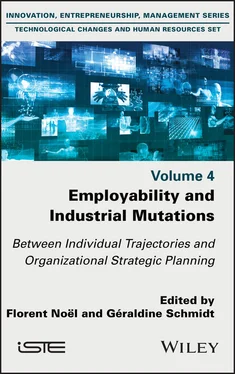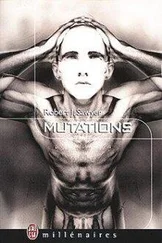1 Cover
2 Title Page Technological Changes and Human Resources Set coordinated by Patrick Gilbert
3 Copyright First published 2022 in Great Britain and the United States by ISTE Ltd and John Wiley & Sons, Inc. Apart from any fair dealing for the purposes of research or private study, or criticism or review, as permitted under the Copyright, Designs and Patents Act 1988, this publication may only be reproduced, stored or transmitted, in any form or by any means, with the prior permission in writing of the publishers, or in the case of reprographic reproduction in accordance with the terms and licenses issued by the CLA. Enquiries concerning reproduction outside these terms should be sent to the publishers at the undermentioned address: ISTE Ltd 27-37 St George’s Road London SW19 4EU UK www.iste.co.uk John Wiley & Sons, Inc. 111 River Street Hoboken, NJ 07030 USA www.wiley.com © ISTE Ltd 2022 The rights of Florent Noël and Géraldine Schmidt to be identified as the authors of this work have been asserted by them in accordance with the Copyright, Designs and Patents Act 1988. Any opinions, findings, and conclusions or recommendations expressed in this material are those of the author(s), contributor(s) or editor(s) and do not necessarily reflect the views of ISTE Group. Library of Congress Control Number: 2021950756 British Library Cataloguing-in-Publication Data A CIP record for this book is available from the British Library ISBN 978-1-78630-743-9
4 Foreword by Patrick Gilbert
5 Foreword by IPSI
6 Introduction
7 PART 1: Towards a General Theory of Employability
Introduction to Part 1
1 Employability and Public Policy: A Century-long Learning Process and Unfinished Process
1.1. One hundred years of trial and error between the individual and the collective: seven operational definitions of employability 1.1. One hundred years of trial and error between the individual and the collective: seven operational definitions of employability Faced with a vague concept, poorly defined or not defined at all, but clearly covered by various meanings such as employability, one possible strategy is to stick to operational versions, by which we mean the presence for each of them of three directly interrelated components: a definition, a statistical translation and consequences for economic and social policy. This leads us to identify at least seven distinct versions.
1.2. Current tensions and recompositions 1.2. Current tensions and recompositions E7, interactive employability, has gradually concentrated the bulk of the practices and debates rooted in them. When it was first formulated, E7 was quickly associated with statistical “profiling” practices, whether American or European. However, the interactions taken into account have become better explored and more diversified, and open up new margins for maneuver, combining individual capacities and collective construction.
1.3. Conclusion 1.3. Conclusion Employability as used in public employment policies has undergone a multifaceted and very slow learning process, still incomplete as we have just seen, with practitioners first exploring a dichotomous version and then unilateral versions, either individual or collective, before focusing on interactive processes. Even though employability actors have often focused on various categories of workers who are more or less far from employment, their use of the term has long been circumscribed to the issue of access to formal employment, taking company practices as data. The depth of the determinants and constraints, for example, rooted in previous work experiences has only been recognized since the 2000s. The interactive capabilities discussed today integrate, with the consideration of personal and contextualized constraints and room for maneuver, the social anchoring of the first dichotomous definition which directly took into account family constraints as they were experienced at the time. Now understood as the interaction of individual and collective capacities, the idea of employability was not fully stabilized in the early 2020s. However, it opens the door to a way beyond: most of the versions currently being explored, far from falling back on a market order taken as given, are likely to nourish approaches to appropriation and emancipation. It would thus be a matter of “equipping the labor market to serve people” as much as, if not more than, “equipping people for the labor market”.
1.4. References 2 Employability as a Managerial Imperative? 2.1. Employability and change: the migration of a concept 2.2. Employability management practices 2.3. Conclusion 2.4. References 3 Capability-based Employability: A Total Organizational Fact 3.1. Employability: being able and enabled to 3.2. Skill-based employability, capability-based employability 3.3. A total organizational fact 3.4. The five traits of the capability-enhancing organization 3.5. Conclusion 3.6. References
8 PART 2: Employability and Individual Trajectories Introduction to Part 2 4 The “Unemployable”: Different Figures, Between Societal Construction and Unconscious Meanings 4.1. People who are not allowed to work 4.2. Discriminated audiences 4.3. Audiences for cognitive remediation 4.4. People who “suffer” in social work through their work 4.5. The generation of refusal 4.6. Conclusion – discussion 4.7. References 5 Staying in the Game: Employability and Mobile Careers in the IT Industry 5.1. Independence as the pinnacle of a boundaryless career orientation 5.2. Maintaining employability as a condition of independence 5.3. Boundaryless career success and employability 5.4. Conclusion 5.5. References 6 Employability in the Era of Digitization of Jobs6.1. Introduction 6.2. Skills for the contemporary labor market 6.3. Research methods 6.4. Findings 6.5. Discussions and directions for future research 6.6. References
9 PART 3: Career Stages, HRM and Employability Introduction to Part 3 7 The MRS, a Device in Favor of Employability and Social Performance 7.1. The MRS as a partnership practice 7.2. MRS and employability 7.3. Survey and main findings on MRS recruitment 7.4. Discussion and conclusion of the results 7.5. References 8 Recruiting in Innovative Activities: From the Impossible Search for a Match to the Construction of Employability 8.1. Recruiting for an innovative activity in a context of rapid growth in production 8.2. The effects and actual functioning of these devices 8.3. Lessons learned in terms of employability 8.4. Conclusion 8.5. References 9 Reclassification and Employability: A Reading in Terms of Boundary Objects 9.1. Social support for company liquidations: a collective actor for the employability of those made redundant 9.2. Studying the boundary objects of the reclassification of victims of collective dismissals 9.3. Study of an emblematic case, the reclassification cell of the Air Littoral liquidation PSE 9.4. The boundary objects of the reclassification of victims of the Air Littoral PSE 9.5. Discussion: the infrastructure of individual and collective employability in reclassification 9.6. Conclusion 9.7. References 10 Being Employable, a Matter of Context 10.1. Employability, an imperative between universalism and contingency 10.2. Results 10.3. Conclusion 10.4. References
10 PART 4: Employability and Work Situations Introduction to Part 4 11 What are the Possible Futures in the Factories of the Future? The Case of Operators in an Aeronautics Company 11.1. Review of the literature 11.2. Methodology 11.3. Results 11.4. Conclusion 11.5. References 12 Digital Technologies as a Lever for Developing the Employability of Middle Managers 12.1. The employability of middle managers 12.2. Digital technology and employability of middle managers 12.3. Research context 12.4. Data collection and analysis 12.5. Main results 12.6. Discussion 12.7. Conclusion 12.8. References 13 Work as a Factor of Integration and Employability: The Case of Trisociété 13.1. From employability controversies to the study problem 13.2 Professional integration and production requirements: the case of Trisociété 13.3. Discussion: from employability to “employerability” 13.4. Conclusion 13.5. References
Читать дальше












